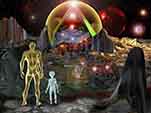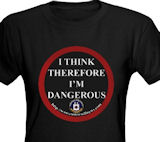The Reptile Report #111499
POKEMON UPDATE!
``Pokemon: The First Movie'' grossed more than $10 million on Wednesday's opening day, cashing in on America's latest kids craze to post the biggest midweek release for an animated film, according to box office figures issued on Thursday. With ticket sales of nearly $10.1 million, the feature film based on the wildly popular ``Pokemon'' TV series imported from Japan far surpassed the previous Wednesday opening record of $4.8 million, set by ``Toy Story'' the day before
Thanksgiving in 1995.
This summer the eight-year-old I wrote about in TRR POKEMON IS MIND CONTROL spent two weeks with me. I was camping at an elegant resort in my little travel trailer so it was the perfect place, and the perfect time, for him to have a real vacation. Since he is “fatherless”, and his little half sister had gone, on an airplane, to visit her real father for five weeks, the little boy was feeling especially lonely and left out. I understood how he felt. His mother is an alcoholic, a chain-smoker and on welfare so (do the math) there isn’t much money left over for much beyond the barest necessities. His uncle, my son, is also an alcoholic and that is the extent of his “relatives” in British Columbia. I basically “adopted” him and his sister, and have become their “stand-in” (stand-up) grandmother (PREDATORS BEWARE!).
When I saw my “grandson” the day after his sister left, I firmly decided to see to it that he had a super vacation, one that would place him on equal footing with his sister and his friends. It was a super vacation, not only for him but for me also. We hiked, boated, went to the beach, watched the whales, had campfires, roasted marshmellows, rode our bicycles, dined on delicious vegetarian foods and had a wholesome, healthy time together with plenty of fresh air and outdoor fun. For intellectual stimulation we checked out books from the library on edible plants and went on nature walks locating and identifying them. Every night he read stories to me before bed. I had found some old books, Christian based, filled with character building stories such as the The Little Boy Who Cried Wolf, The Ugly Duckling and The Little Red Hen. There was no television available so Pokemon was not much of a topic except for the following story he told me after he had been with me for a few days.
Just before he came on vacation with me his school friend had called the 800 number for Pokemon’s headquarters in Ontario (I think) and indicated that he wanted to be “tested”. The appointment was made for six o’clock in the evening, on the steps of the local elementary school (in Surrey, BC) that was closed for the summer (aka AN ABANDONED BUILDING). The friend contacted my “grandson” and another boy and they all showed up at the school at the agreed upon time. They “knew” not to tell their parents.
A Pokemon van showed up. The van’s windows were covered over with Pokemon posters completely concealing anything inside. My “grandson” told me he tried to see in but couldn’t. He told me two men got out and introduced themselves. One was 27 years old and the other was 36. They were the ones who conducted the “tests”.
Evidently my “grandson” was the big winner. He was given some prizes, Pokemon paraphenelia including a poster. He stated that during the “testing” one man was whispering constantly into something he thought was a walkie talkie. He found out after that he was talking to Professor Oaks who was inside the van and only came out when the “test” was over. Professor Oaks is a cartoon character in the Pokemon cartoon series. Professor Oaks congratulated my “grandson” on his abilities and he was the one who presented him with the prizes.
My “grandson” did not tell his mother anything about this. When I asked him why, he said he just “knew” he shouldn’t. On further questioning about this, he admitted that the men said that parents shouldn’t be told because they might interfer.
Needless to say I was alarmed. Men meeting with little boys at 6:00 p.m. at an abandoned school? Strange men testing children without their parents knowledge or permission? Talking secretly with someone inside a van that has its windows covered hiding someone inside while the “testing” is going on? TESTING FOR WHAT??? And finally a CHARACTER from the cartoon series appearing in “reality” from inside the van? WHAT IS GOING ON? This is all wrong. What were these men doing to these children? WHAT HAVE THEY DONE TO MY “GRANDSON”? It’s obvious that something criminal is taking place or the children would not be “impressed” with the need to keep it a secret from their parents.
Two days ago I read the following statement in a news item about a child swallowing a Pokemon ball:
“Pokemon, or pocket monsters, began in 1996 as a video game in Japan in which players collect pet creatures with different powers and ``train'' them for competitive battles. The game has evolved into toys, trading cards and a syndicated TV series that premiered last year in the United States.
This is exactly what my “grandson” went through but it wasn’t a cartoon episode, it was a real event, with real people. It struck me that these men are in fact, stalking children, looking for “PETS” to train them for some wierd kind of competition. There is something drastically wrong about the whole thing.
One only has to read the opening paragraph of this report to understand that where there’s BIG MONEY, we have BIG TROUBLE!
``Pokemon: The First Movie'' grossed more than $10 million on Wednesday's opening day, cashing in on America's latest kids craze to post the biggest midweek release for an animated film, according to box office figures issued on Thursday. With ticket sales of nearly $10.1 million, the feature film based on the wildly popular ``Pokemon'' TV series imported from Japan far surpassed the previous Wednesday opening record of $4.8 million, set by ``Toy Story'' the day before
Thanksgiving in 1995.
The following are two news items sent to me by a group of concerned Mothers in Japan.
CARTOON PUTS 120 CHILDREN IN HOSPITAL
By Juliet Hindell in Tokyo
ABOUT 120 children were treated in hospital yesterday for conditions similar to those of epilepsy after a television cartoon triggered convulsions and other ill effects.
The mass outbreak in more than 700 children across Japan caused panic among parents. The television company has started an investigation. The Pocket Monsters cartoon was inspired by a Nintendo computer game of the same name. Although it is frequently violent, most Japanese parents had regarded it as suitable for children.
The latest episode, broadcast on Tuesday evening, included a scene where the screen was filled by a bright red explosion accompanied by strobe lights and followed by a white flash. The culmination showed the main character's eyes flashing red.
The sequence lasted only five seconds but it provoked fits, vomiting, eye irritation and breathing difficulties. More children were afflicted later in the evening when some news programmes replayed the scene during their reports on it.
A victim said: "I was lying down watching Pocket Monsters and the next thing I remember is being rushed to hospital in an ambulance." Most of the casualties were discharged almost immediately but about 120 were still in hospital 24 hours after the broadcast. A five-year-old girl is said to be in a serious condition.
Dr Tsuyoshi Akiyama, an epilepsy expert at a Tokyo hospital said: "What is unique about this incident is that so many children were affected at the same time."
TV Tokyo has asked outside experts, including doctors and psychologists, to investigate. It intends to cancel next week's episode if the cause of the mass convulsions is still unclear. Japan's Ministry of Posts and Telecommunications is also holding an inquiry.
Dr Akiyama said: "The flickering lights and the intense colours could bring on epileptic attacks. The producers of the programme should use more moderate effects."
Parents are advised to keep children well back from the screen and provide an overhead light. Large screens, popular in Japan, may also be part of the problem.
Britain has had similar cases. In 1993, Jasminder Bassi, 14, died after playing Nintendo's Super Mario game for an hour. Nintendo's Pocket Monster computer game is in black and white only. More than seven million have been sold, making it the best seller.
Robert Uhlig, Technology Correspondent, writes: British programmes and video games are tightly regulated to ensure that they do not trigger fits in the 17,000 people believed to suffer from photo-sensitive epilepsy. In February, the Independent Television Commission banned two advertisements, for Boots lipstick and Marmite cubes, because they had a potential risk.
ITC guidelines advise that lights or images flickering above a set frequency should be avoided, images should not dominate the screen and repetitive psychedelic patterns should be avoided.
A Government-backed study of video games said that flashing lights would cause the first epileptic fit for 150 Britons a year - most aged between seven and 19 - but this was no more than those caused by television.
27 November 1996: Advert withdrawn for causing epileptic fit
24 September 1996: Japan's art of darkness
Electronic Telegraph
http://www.telegraph.co.uk
Tuesday 24 September 1996
Issue 489
JAPAN’S ART OF DARKNESS
“The influence of manga comics is all pervasive in games, graphics and animation,” says Michael Fitzpatrick
THANKS to Japan, the soul of computer graphics is a little darker than Disney might have liked.
Born into a high-tech world, bombarded with graphic images and steeped in manga comics and computer games, Japan's Generation X artists - continue to produce distinctive graphics which perpetrated by the likes of Sega, Nintendo and animated manga, has become one of that country's fastest growing cultural exports.
Technology and art is also being put together to create manga-like characters in cyber space. "Pop idol" Kyoko Date, a piece of computer generated fluff, recently took up permanent residence on her own cyber site created by virtual reality specialist Visual Science Laboratory.
For years Japan had sought to manufacture the perfect teen dream, thanks to new technology the marketing men have a creation that seems more three-dimensional than her flesh and blood contemporaries.
Though much Japanese cyber art is hyper-cutesy like the cursive Kyoko, the serious stuff has its roots in the better art end of the comic book manga tradition called gekiga.
Somewhat surprisingly for conformist Japan, the manga tradition calls for highly individualistic artists and artistic styles. And America, which used to rely on production line methods, now takes its cue from them, says Chrys Morden, of comic bookstore Forbidden Planet, in London.
"The Americans and Europeans are very much influenced by the Japanese style. Even Spiderman has gone for the manga style in the big way. With Japanese graphics there's no typical style.
American Generation Xers are fans of the animated TV series Sailor Moon
"There's a generic similarity in things like the use of speed lines and movement but there are now a lot more individual artists styles. This has only happened in the States in the last five years."
Nearly all Japan-inspired games graphics and characters, good and bad, started life as the distinctly low-tech comic book style manga that fills millions of telephone directory-size newsprint magazines. The manga market alone is worth an astonishing 540 billion yen.
Generally, manga follows the usual comic book format, but looks nothing like its American counterparts. The stereotype is of fantastically tonsured characters with enormous eyes, which will be familiar to anyone who has seen a Japanese fantasy game. The art itself is delightfully varied, from the mainstream sentimental - saucer-like eyes full of stars and drippy backgrounds - to downright weird and violent styles.
Overall, the manga style owes something to western influence but it borrows more heavily from Japan's long graphic tradition. Like Japan's famous woodblock prints, there is an economy of line, distortion is favoured and fantastic devils and spirits culled from Japan's extensive folklore are often depicted.
Manga's energy naturally overflowed to computer games and graphics to animation. Mostly manga still remains an esoteric oddity to most westerners but the TV spin-off from successful comics have brought celluloid heroes with whom we are all familiar, such as Marine Boy and Astroboy.
American Generation Xers are fans of the animated TV series Sailor Moon. A typical piece of animation in the girl's manga shojo style, featuring the huge eyes, the tiny chin and distinctive hairstyle that even Jean-Paul Gaultier successfully mimicked in a recent fashion show.
Japan had fallen behind in developing VR technology but is now hurrying to exploit the market
Manga's marriage of reality and fantasy is being taken the next step by computer graphic artists and digital technology. Kyoko Date represents a move away from the two-dimensional manga style towards a a distinctly trompe-l'oeil look that worked better with virtual reality (VR). Computer-generated Kyoko Date does bear more resemblance to a real Japanese girl, but there again she is a product of the more American technology - motion capture, which is used in Jurassic Park.
Japan had fallen behind in developing VR technology but is now hurrying to exploit the market. MITI, Japan's Ministry of International Trade and Industry, is working with Japanese corporations to develop more applications of VR.
Japanese arcade entertainment companies are also honing in on the VR market and now that VR promises to revolutionise Computer Aided Drafting/ Computer Aided Manufacturing (CAD /CAM) by allowing 3D designing in a 3D environment, Japanese artists are poised to exploit yet another medium for the realisation of their extraordinary vision.
Britain's first exhibition of manga and anime opens at the Ritzy Cinema, Coldharbour Lane, London SW2, on Friday until October 14.
© Copyright Telegraph Group Limited 1996
I repeat: “Manga’s marriage of reality and fantasy is being taken the next step by computer graphic artists and digital technology.”
INDEED!
Jana Janus
Omnipresent on The Mean Planet






































